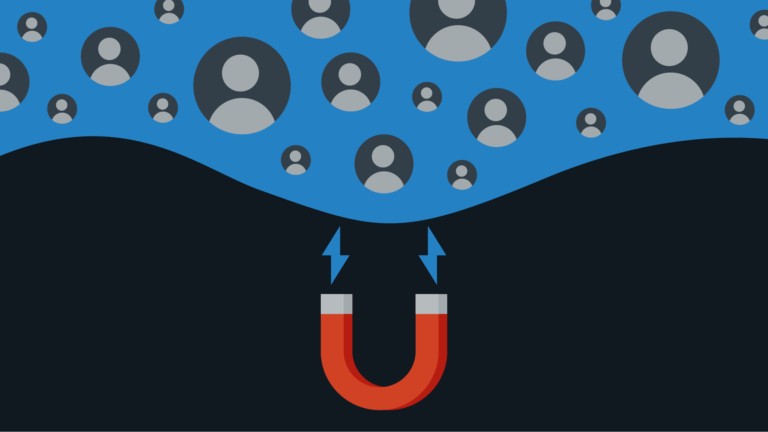7 ways to build a brand awareness strategy

A captivating brand and brilliant products are only valuable if your target audience can find them. You need a marketing strategy that prioritizes brand recognition.
That’s the core reason you need to build and execute a targeted brand awareness strategy – to bring attention to all the work you’ve done creating a memorable brand.
This article will give you a number of proven tools and approaches to get your target buyer to stand up and take notice of your brand.
What is a brand awareness strategy?
A brand awareness strategy is designed to make your brand recognizable and memorable for your target audience. That could include consumers, for brands operating in the B2C space, and businesses, for those in the B2B space.
A consumer that can identify your product by name, cite some or all of its key value propositions, and can also describe the visuals and feel associated with it has what we would call ‘high’ brand awareness. This is the goal of a brand awareness strategy – to build and then deepen your audience’s association with your brand and all it offers.
Why is a brand awareness strategy important?
Brand awareness does more than just increase the likelihood of a sale or conversion, although these are critical ways to measure its value. It also builds equity for your business in the long term.
Imagine a brand with a successful single product that, years into its existence, decides to launch a second product. That second product will benefit from the value already created by the first. You will already have earned some degree of consumer trust. The existing brand awareness of your first product creates a platform for the second to launch. No matter what the industry, brand awareness is a critical enabling factor that will help you expand into new markets, target new demographic segments and grow your business.
It also improves marketing effectiveness. Marketing ROI is notoriously difficult to pin down for most companies. But one way to amplify the effectiveness of your marketing efforts is by increasing awareness of your brand in the audience to which you’re marketing. In fact, these things work together. The higher the brand awareness level in your audience, the more effective your marketing will be. The more effectively you market, the more you will expand brand awareness. When you think of one, think of both.
7 tips for building a brand awareness strategy
There’s an extraordinary number of ways to build brand awareness, especially now that marketing has gone predominantly digital. Here’s a list of seven of the core ways you can build your brand with your target audience. And while these tips are just the tip of the iceberg, they’re a great foundation as you consider how to put your brand in front of those who will appreciate it most.
1. Develop and consistently communicate a powerful brand.
It may sound elementary but the first step in growing brand awareness is building a brand worth sharing. Rushing too quickly to market, launching campaigns that don’t carefully articulate a calculated value proposition, or employing a spray-and-pray approach to audiences and messaging can cost you money and time.
Of course, once a great brand is created, you will then need to communicate it consistently. That means knowing and consistently executing how your logo and brand colours are presented. That means writing and speaking with one brand voice. That means being calculated about what you want the market to know, and what can be put aside.
2. Segment your branding efforts to target a specific audience
Most brands aren’t designed to appeal to everyone. Or, if they are designed to appeal to everyone, there’s a danger of trying to market too broadly, too early. The more tightly you can focus your marketing efforts, the more you can hone in on the people you need to reach to meet your sales targets and business goals.
Developing target personas and carefully calculating the messaging and mediums you need to reach them will help you focus your brand awareness efforts. A business selling heavy industrial equipment to a single industry in a single state or province has a much more focused way to consider brand awareness and marketing activities than one looking to connect with all the consumers in, say, Australia.
3. Utilize social as part of your brand and market awareness strategy
Social media is the great equalizer for brands. It enables start-ups and challenger brands to compete with the biggest players in the market. It is a force multiplier for great brands without a lot of profile. And for medium-to-large brands, social media and digital consumer engagement is basically mandatory, even in the B2B space.
The key to social is approaching it strategically. Launching Twitter, Facebook, TikTok, LinkedIn and Instagram channels is only valuable if the content you produce inside these channels is valuable. And remember, once you launch a channel, you create the need to service it with fresh original content and, if you’re smart, to engage with your followers and your targets in engaging discussions. A social channel that rarely generates activity can actually be a detriment to a brand. It’s basically the digital equivalent of a boarded up storefront. Why would someone come back?
Some brands will need to make social a key part of their marketing efforts, particularly if there’s a lot of activity in their space or industry. Others (including many B2B brands) will find they need to take a more high-touch approach to building brand awareness with face-to-face conversations playing more of a role than social media. That doesn’t mean they should ignore social. It just means they should be targeted about how they use it.

4. Personalize your marketing strategy to create brand awareness
The more personalized a message or piece of content is, the more effective it will be.
Companies (including yours) can now be ultra-targeted in their marketing and brand awareness efforts by using analytics and digital targeting tools to deliver ads, content and messaging to specific individuals. You can serve content to users based on who they are, where they work or what they’ve done in the digital space. You can retarget them with increasingly focused messaging. You can drive more conversions by this overall process of personalization. If you’ve done your homework on brand and personas, you can market to people so they feel like they’re the only customer on earth and everything they see was built just for them.
5. Use digital retargeting with current and prospective customers
We touched on this above but it’s worth its own section. Digital retargeting is an element of personalization that looks at a customer or potential customer’s digital footprint and enables you to retarget them based on where they are in the customer acquisition funnel, from that first moment where they’ve never heard of your brand, to the point where they’re signing a contract or making a purchase.
It could look like this: a new user stops by your website and browses around. They don’t buy. They don’t sign up for your newsletter. They don’t follow you on social. They leave. That’s the end, right? Nope. From this point on you can retarget them with specific digital ads that outline the most personalized (there’s that word again) value propositions you can offer, or specific offers or deals they may want to consider. And once they’re a customer, you can continue to retarget them with new offers that you know will draw their interest.
Digital retargeting typically makes heavy use of Google, Facebook, LinkedIn and other major digital players and works most effectively as part of a larger digital marketing and content creation strategy.
6. Develop key partnerships
Building partnerships is one of the most effective ways to build brand awareness. This should be on your radar. The real question is what kind of partners will best serve your business?
Some brands will want to build partnerships with other non-competing brands that feature similar target audiences. You can use a complementary brand’s marketing efforts and existing brand awareness as a launching pad for your own.
Other brands will find that partnering with consumers is most effective. This is particularly true for B2C brands, who have a couple of different ways to partner with consumers. They can leverage word-of-mouth recommendations amongst general consumers. They can also tap into the growing field of influencer marketing, where people with large social followings share a brand’s messaging and content with their followers. They’re typically compensated financially for this service.
Many brands will want to focus on retail partnerships, particularly those in heavily commoditized spaces. For example, a new health-focused food brand may be well-served by a partnership with a regional chain of health food stores.
Brands with social purpose in their DNA may want to partner with a non-governmental organization (NGO). For example, Lush Cosmetics explicitly states that “we believe it’s our responsibility to advocate for the environment, animals and people in need.” They’re able to fulfill their mandate to do good in the world while exposing their products to followers of organizations that may appreciate or be looking for them.
7. Offer referral rewards
B2C companies will often find one of the most effective ways to build brand awareness is to offer tangible rewards to their existing customers if they help recruit new ones.
Think here of fitness clubs that offer reduced membership fees to members that refer their friends for an initial consultation. Think of a cruise ship that offers a referral discount to a passenger on their ships that brings in a new customer for a future trip.
These referrals can work on an ongoing or targeted campaign basis, targeting specific prospective customers or the general consumer base.
Where to begin to increase your brand awareness?
Ah! Here’s the million dollar question. Where do you begin?
As is often the case, you begin at the beginning. No brand awareness strategy will be effective without a solid brand in place first. Develop your brand strategy in the context of your business goals. The latter should lead the former.
And remember – branding choices are unlimited. Marketing tools and tactics are endless. But your budget probably isn’t unlimited or endless. So, if you don’t have a branding or marketing expert on your team, find someone who can help you ask the right questions and come to the right answers.
With your defined brand in place, you should have clear direction about how to build a brand awareness strategy that will drive results.



